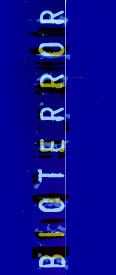|

|

|
|
|
 Sheep and other livestock could be the source of
Q-fever for bioterrorists as well as the target of
terrorist attacks.
Sheep and other livestock could be the source of
Q-fever for bioterrorists as well as the target of
terrorist attacks.
|
Agents of Bioterror
Q Fever
incubation period |
symptoms |
how it would spread |
treatment |
vaccine
Q (or "query") fever generally affects sheep, cattle, and
other farm animals. The disease agent, the rickettsial
bacterium Coxiella burnetti, builds up in placental
tissues, so veterinarians and farmers aiding animal births
are at risk. But natural human cases are rare.
In the 1960s, bioweapons developers in the U.S. considered Q
fever an excellent "incapacitating" agent. The disease is
debilitating, but rarely lethal. The U.S. military
envisioned using Q fever to cripple enemy forces and drain
them of resources.
The Soviets, and possibly Iraq, have developed and tested Q
fever. And the cult Aum Shinrikyo obtained the microbe and
toyed unsuccessfully with its use. Q fever may appeal less
to bioterrorists than to militaries, however, because it is
an inherently survivable disease.
Incubation period before symptoms
2-3 weeks
Symptoms
- high fever, chills, and throbbing headache
- profuse sweating
- visual and auditory hallucinations
- pneumonia
- hepatitis
How it would be spread
Aerosol or food. Human-to-human transmission is rare.
Treatment
Even untreated, most people with Q fever will recover.
Treatment with a variety of antibiotics shortens illness and
results in fewer complications.
Vaccine
A vaccine exists but is not available to the general
public.
Chart of the 8 agents
Photo: Corbis Images
History of Biowarfare
|
Future Germ Defenses
Interviews with Biowarriors
|
Global Guide to Bioweapons
|
Making Vaccines
Resources
|
Teacher's Guide
|
Transcript
|
Site Map
|
Bioterror Home
Search |
Site Map
|
Previously Featured
|
Schedule
|
Feedback |
Teachers |
Shop
Join Us/E-Mail
| About NOVA |
Editor's Picks
|
Watch NOVAs online
|
To print
PBS Online |
NOVA Online |
WGBH
©
| Updated November 2001
|
|
|
|